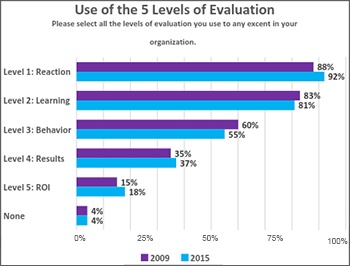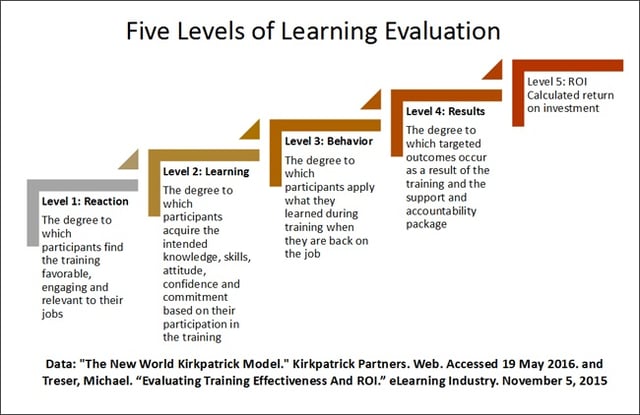Phenomecloud is a full-service technology company dedicated to helping clients solve business problems, improve the capability of their people, and achieve better results.

We enjoy celebrating with clients when a new learning program improves their income statement. For most, it is the first time they have directly connected a training effort to business profitability, and they are amazed at how much knowledge improves their business results.
What troubles us is that so few organizations are doing it. A recent ATD survey reported that only 18% of organizations measure the ROI of learning. Even more troubling is that in spite of the widespread emphasis on learning measurement over the past few years, there has been no significant change since 2009. The survey queried participants on their use of the four evaluation levels in the Kirkpatrick model plus the fifth level, ROI, added by Jack Phillips in 1951.

The first three levels evaluate the effectiveness of learning in increasing relevancy. At Level 1 we measure learner reaction. Smiley sheets are warm and fuzzy feedback, but many factors affect learner reaction, and many of them have nothing to do with better performance. At Level 2 we evaluate what they learned, but it is only at Level 3 that we measure changes in behavior that transform knowledge into action.

Effectiveness measures are necessary and can provide the insights we need to improve learning. As methods improve and become more focused on results, the impact grows over time. We recommend you use the tools in your LMS and analytics to automate effectiveness measures so you can spend your time on developing impact measures.
Measuring impact at Level 4 cannot be done without line-of-business leaders. They own the performance data, and should take ownership of executing the learning activities that will improve their results. A disturbing statistic from a larger Towards Maturity study is that only 31% of L&D leaders work with line-of-business leaders to determine what KPIs they want to impact. Those that do are much more successful. They are:
- “Three times more likely to agree that line managers are active in supporting learning,
- Three times more likely to agree that line managers provide information on the application of learning,
- Four times more likely to measure KPIs when evaluating impact,
- Twice as likely to communicate successes.”[1]
Failing to work hand-in-hand with line-of-business leaders is the crux of the business impact problem. If your leaders are not using learning to address operational issues and measuring the impact, they are missing an opportunity to use learning to build the business.
For L&D, evaluating the effectiveness of learning provides the mechanism for feedback to improve it. If your company invests in learning and continuously evaluates and improves it, the impact on the business and ROI will grow.
Before embarking on any major initiative, L&D leaders can set the tone by asking the right questions. What business results do you need to improve? By how much? What is the expected result in financial terms?
By starting this conversation, you can break down the organizational silos to share operational, performance, and learning data to measure impact.
The discussion about impact leads to return on investment. Fortunately, the methods for calculating ROI are standardized, and your Finance team should have the resources you need to capture and present the data. By partnering with Finance and your line-of-business leaders, you can start a discussion using the language your business leaders understand.
You will base the benefits in your ROI calculations on estimates of impact. Don’t spend time seeking exact numbers, but be prepared to justify your estimates.
We don’t mean to imply that you should measure ROI on every learning activity. Gathering and analyzing the data will take time and resources, and you should only spend the resources when the potential return warrants it. Over time, measuring ROI will become easier as you develop the methods and tools for capturing the data.
If you need an ROI worksheet to help you collect data on costs and benefits, you can download a sample here :
References :
1. Overton, Laura and Dr. Genny Dixon. Making an Impact: How L&D leaders can demonstrate value.” Towards Maturity. June 2016.






Leave a Comment